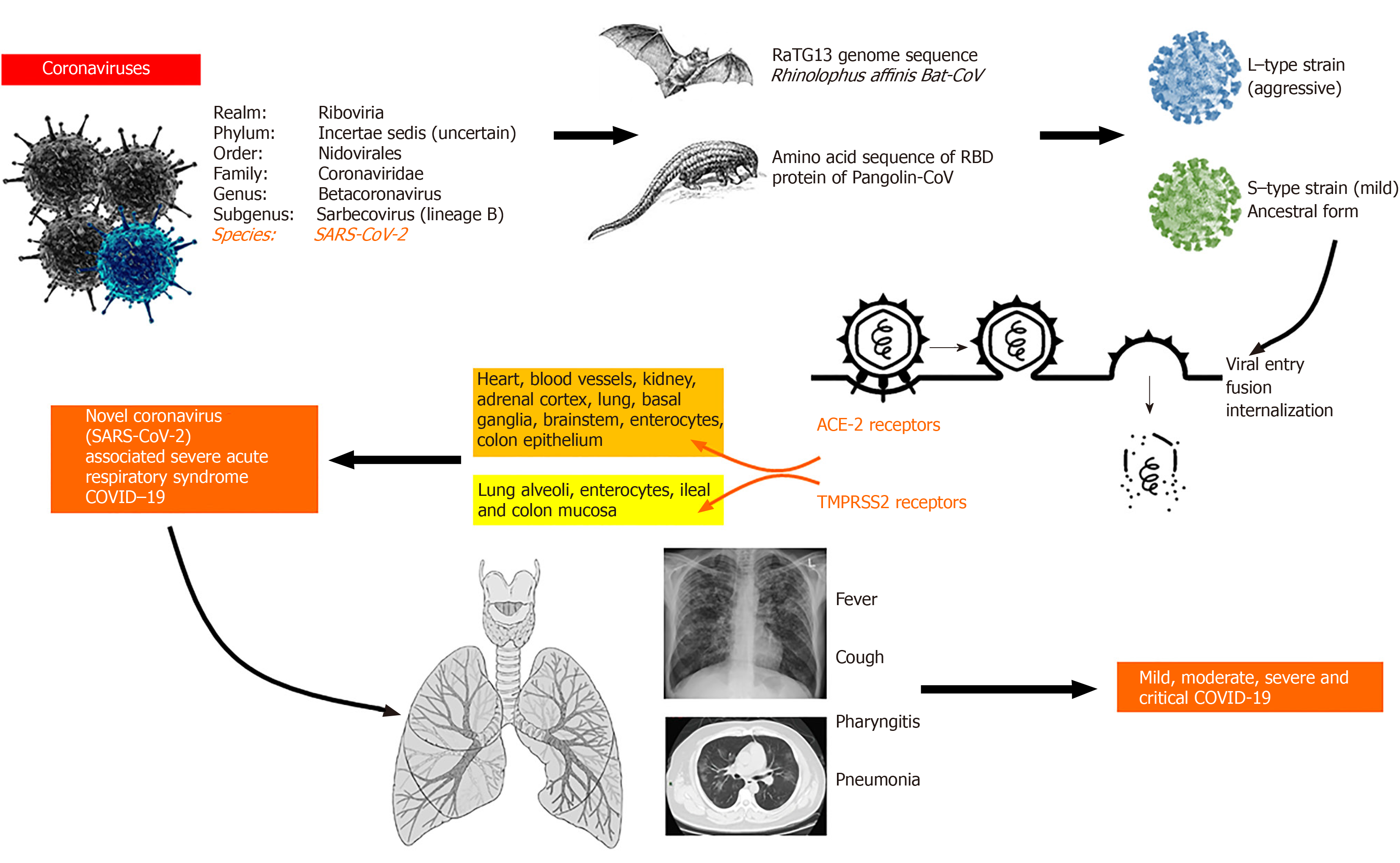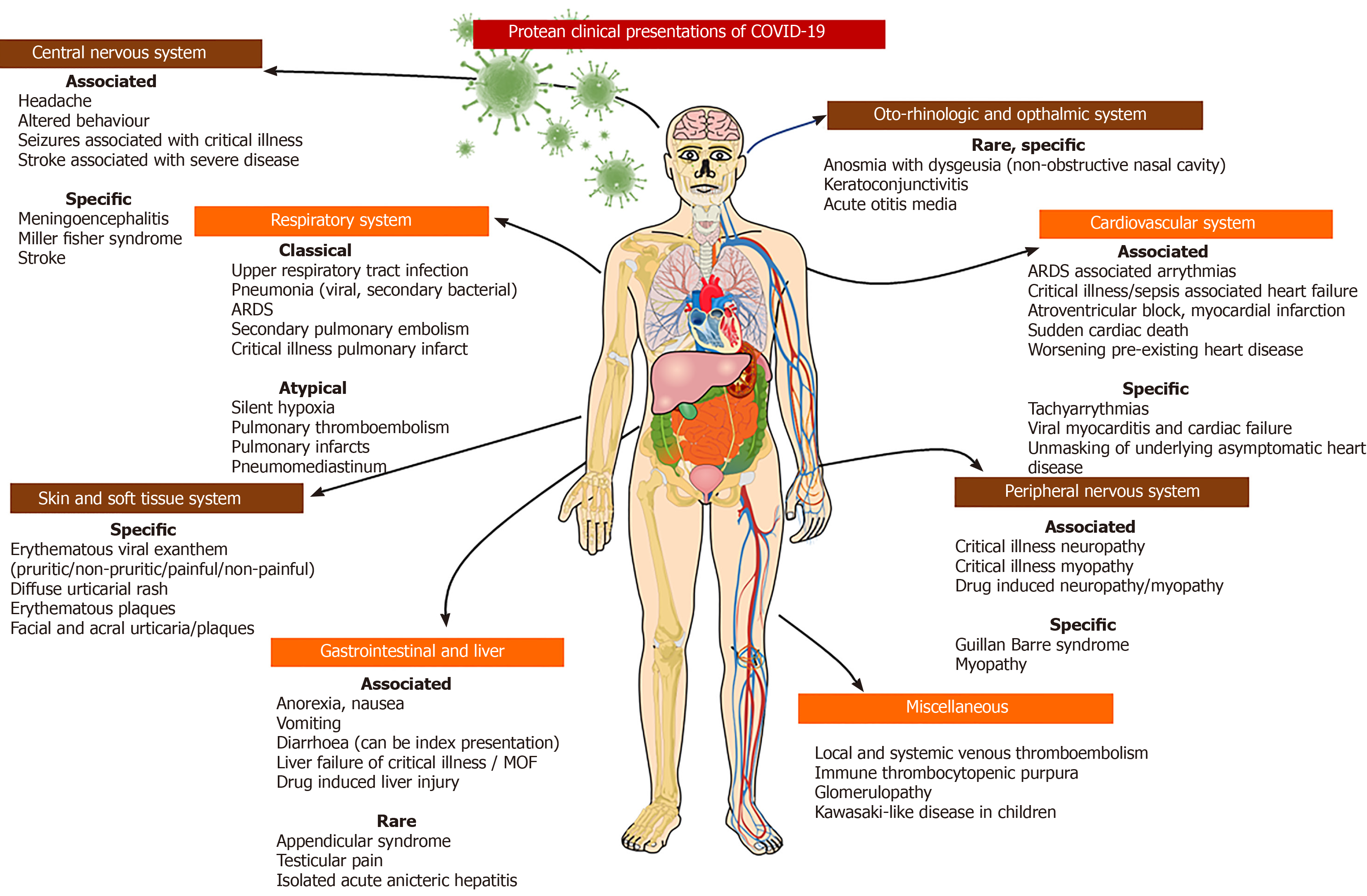Copyright
©The Author(s) 2020.
World J Clin Cases. Sep 26, 2020; 8(18): 3956-3970
Published online Sep 26, 2020. doi: 10.12998/wjcc.v8.i18.3956
Published online Sep 26, 2020. doi: 10.12998/wjcc.v8.i18.3956
Figure 1 General considerations with regards to novel coronavirus 2019 disease.
The novel coronavirus (severe acute respiratory syndrome coronavirus–2) belongs to the beta coronavirus genus and has been shown to have shared genomic sequences with bat and pangolin coronaviruses. Different strains have been controversially proposed that differ in virulence, and viral entry has been demonstrated to occur through two important receptors, namely, the angiotensin-converting enzyme–2 and the transmembrane protease serine 2 receptors present on multiple organ systems that showcase multisystem involvement and variable disease presentations. Common and typical symptoms include fever, cough and breathlessness or difficulty in breathing and can be mild, moderate, severe, or critical in its disease course[1-4,7]. COVID-19: Coronavirus disease 2019; SARS-CoV-2: Severe acute respiratory syndrome-coronavirus-2; ACE-2: Angiotensin-converting enzyme-2; TMPRSS2: Transmembrane protease serine 2.
Figure 2 Summary of different clinical presentations and organ system involvement of coronavirus 2019 disease.
Overall, multisystem involvement is due to the severity of the disease, but certain specific symptoms and signs can provide valuable clues towards a clinical diagnosis of coronavirus 2019 disease, which has to be confirmed on polymerase chain reaction studies from nasopharyngeal swabs. COVID-19: Coronavirus disease 2019.
- Citation: Philips CA, Mohan N, Ahamed R, Kumbar S, Rajesh S, George T, Mohanan M, Augustine P. One disease, many faces-typical and atypical presentations of SARS-CoV-2 infection-related COVID-19 disease. World J Clin Cases 2020; 8(18): 3956-3970
- URL: https://www.wjgnet.com/2307-8960/full/v8/i18/3956.htm
- DOI: https://dx.doi.org/10.12998/wjcc.v8.i18.3956










